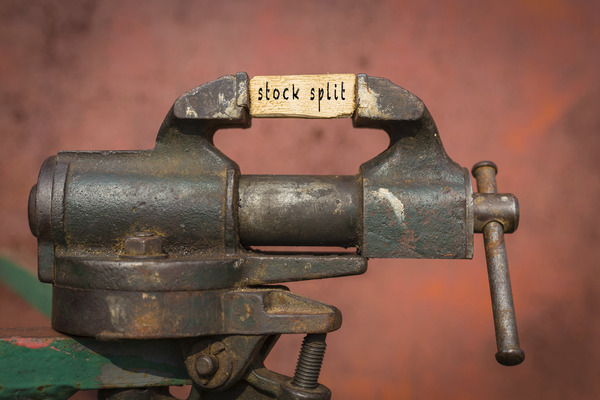A reverse stock split usually occurs when a company in some sort of financial trouble is in danger of being delisted from the stock exchange. Because of the negative connotation, I was surprised to see, on January 20, business development company Oaktree Specialty Lending (OCSL) announce a 1-for-3 reverse stock split.
A subscriber wrote in to ask me about this – what happened, why, and how the dividend payouts behave afterward.
And it reminded me that sometimes, these reverse stock splits actually work in our favor…

A reverse stock split increases the share price without increasing the value or market cap of the company. Most of the time, you will see a reverse split declared when a company’s share price decreases to one dollar or less, as a stock will be delisted from the exchange if it trades below a dollar for any length of time.
Typically, a company whose stock has dropped to the dollar range is also a company that is not doing well with its business. As a result, investors see a reverse split as a sign the company may be in trouble; increasing the share price with this maneuver won’t stop the price from continuing on a downward trajectory.
Because of the negative connotation, I was surprised to see, on January 20, business development company Oaktree Specialty Lending (OCSL) announce a 1-for-3 reverse stock split. Let’s go over what that meant.
With the Oaktree reverse split, investors would receive one share for every three they owned. If an investor had 300 shares, he would have 100 shares after the transaction. At the same time, the share price increases by the same factor. At the time of the reverse split, OCSL went from around $7 per share to $21. This means the 300 shares worth $2,100 became 100 shares worth $2,100.
A subscriber asked me what happens to a dividend with such a reverse split.
Oaktree Specialty Lending will adjust its dividend rate to match the reverse split. The company paid $0.18 per share paid at the end of December, meaning it will now pay $0.54 per share—or more, as the company has been growing its dividend. The adjusted dividend will keep the yield near the 10% level that was in effect before the reverse split.
The reason for the Oaktree reverse split seems to be a move to make the share price appear to have more value. Investors are sometimes leery of a sub $10 share price—but at $20 per share, OCSL trades on par with many of its BDC peers.
In the case of Oaktree Specialty Lending, the reverse split definitely is NOT a danger signal. The company is well-run, and I would give it a top-five rating in the universe of business development companies. BDCs become more profitable when interest rates are higher, and OCSL has been growing its dividend.
I currently recommend three other BDCs to my Dividend Hunter subscribers. If I decided to add a fourth, OCSL would be the most likely choice.






